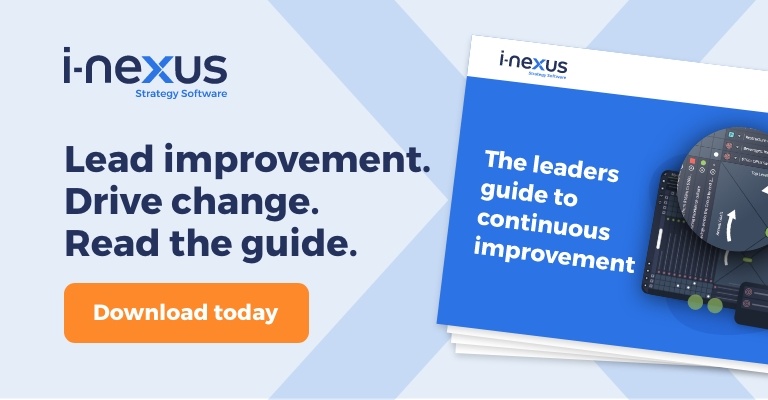What is a root cause analysis and how can you perform one for your process issues? Find out in our overview and 5 tools you can apply in your business.
Written by: James Milsom, Head of Marketing
A root cause analysis is a method for discovering the underlying causes of an issue with your process in a structured manner, using dedicated tools to find and then implement the most effective solution.
It is a staple problem-solving technique used in organizations that adopt continuous improvement, and as the name suggests, it is about finding the root of the issue, not simply applying solutions which may only resolve surface problems.
In this blog we will address the basics around root analysis, exploring:
- What a root cause analysis is
- Who would conduct a root cause analysis
- When would the analysis be performed
- How you perform the analysis using 5 tools
- Why you should use root cause analyses
- The common challenges with root cause analyses
- How software can help your root cause analysis
- Root cause analysis Excel templates
Read on to discover why a root cause analysis will help you remove blockers in your process.
What is a root cause analysis?
At its heart, the root cause analysis involves three broad questions, with several methods available for going about answering them:
- What is the problem?
- Why did it happen?
- What will we do to prevent it in the future?
Indeed, it is worthwhile clarifying that these are the questions that are contained within each root cause analysis investigation and must be answered to reveal which of the potential causes of disruption is the correct one to solve.
The root cause analysis story begins with engineering and Sakichi Toyoda, the man synonymous with the Toyota Production System and Lean Management.

Sakichi Toyoda, credit steemit.com
It, like Lean as a whole, has been adapted across industries and nations.
When used within a continuous improvement culture, a root cause analysis will become a standard intervention in any process, especially when avoiding time delays is crucial.
However, there are other reasons to perform them, as covered below.
Who conducts a root cause analysis?
A root cause analysis can only be effectively completed with the right team - not with too many people needlessly involved.
Typically, the team for a root cause analysis will consist of:
- A facilitator – someone to set an agenda and guide the participants through the event
- Team members involved in the process itself, more specifically, the incident
- A health and safety specialist
- Process owner – for knowledge of the historic process
- Subject matter expert to interpret and implement solutions
When would you perform a root cause analysis?
At its simplest, you would, and should, perform a root cause analysis if a problem repeatedly shows itself throughout a process. That problem is impeding the flow of information or services in said process.
There are five different environments where a root cause analysis may be needed:
- Safety: For analyzing accidents, safety, and healthcare
- Production: For quality control in manufacturing
- Process: For following up on business processes
- Failure: For engineering
- Systems: For examining your system's performance
How do you perform a root cause analysis?
To begin, these rules are present in any tools / methods used in your analysis:
- Document the event and provide a factually correct account
- Form a problem statement to be addressed
- Identify and collect data and narrative which verifies the account
- Develop a timeline of the event and proceed to adopt a root cause analysis technique
- Potential causes which have been uncovered can then be assigned proposed solutions, prioritized using a tool such as a Pareto chart, organizing according to their cost and effectiveness
- Socialize the remedies to understand feasibility
- Apply countermeasure actions to remedy the situation
- If the remedy does not work, rinse and repeat these steps until the solution is effective
Here are some root cause analysis methods you can employ:
1. The 5 whys
The de-facto method in the root cause analysis world, the 5 whys analysis.
It simply is a series of ‘why’ questions to uncover the root cause. Here’s an example:
Problem statement: The business cards were printed in red, not black font
- Why? Misprint
- Why? Low black ink
- Why? Stock system error
- Why? No warning of low stock
- Why? Data entered incorrectly
By asking a repeated series of questions, you can get to the core issue: stock data was entered incorrectly into the system.
In the future, error-proofing efforts could be made, such as a pop-up prompt in the stock system to confirm the numerical amount.
However, while 5 whys is simple and the most straightforward analysis, its effectiveness depends on the team using the method.
For example, a team not too concerned with participating in the analysis may see to ask countless ‘"whys."
2. Fishbone / Ishikawa Analysis
Want to understand the causes and effects which form your problem?
The fishbone analysis is a visual tool to map out the different categories of potential causes and then break these down into smaller categories which may be causation.
The categories are commonly, but not exclusively:
- Maintenance
- Material
- Machine (technology)
- Man powers (physical work)
- Method (process)
- Mother nature (environment)
To start, generate a problem statement, such as “Why is our online basket abandon rate high?”.
By asking this, you form the head of the fish, and the rest of the body flows from this question.
The remainder of the fishbone consists of several lines (the bones) representing different questions to ask.
For example, under technology, you may question how your website supports capturing customers who still need to complete the purchase.
Can you set up remarketing ads and follow-up emails that reduce this abandonment rate?
Under process steps, you could question whether the customer journey is streamlined, i.e., minimal steps to order.
Crucially, the point is that you form ideas around the causes and possible solutions for this root cause.
3. Failure Modes and Effects Analysis (FMEA)
An FMEA examines a process to identify where and how failures may occur and the consequences of failure.
Crucially, this can be performed before the process goes live.
To conduct one, follow these steps:
- Review the process by creating a flowchart of each part of the process
- Suggest potential failures by consulting data and creating a list
- List the effects that may happen from each potential failure
- Rank the effects by their severity
- Create an action plan to remedy these failures and monitor if they occur.
Ultimately, you will be left with actions to address these failures, prioritized by those with the most significant impact.
Recording existing knowledge and future actions feeds your continuous improvement, and learning culture.
4. Pareto Analysis
The Pareto chart consists of a bar and a line.
Each bar represents a type of defect / problem.
The bar's height represents a critical unit of measure, typically frequency of occurrence or cost.
These bars are ordered from tallest to shortest, designed to show you which defects have the most significant impact.
The line represents the cumulative percentage of defects.
To complete a Pareto analysis, you would follow these steps:
- Define your problem statement
- Identify the actions which built up to the problem
- Plot each of the causes on a bar graph and the X-axis
- Assess each cause and gauge the impact it has on causing the problem
- Quantify that impact with a score that is plotted on the Y-axis
- Complete this for each of the activities and arrange these based on their scores
The idea is that the few most impactful defects constitute most of the total problem.
With this information gathered, you can choose the most effective change.
It is highly useful when you have many possible courses of action and need to prioritize these.
5. Interviewing
While similar in nature to the 5 whys technique, the interviewing method (otherwise known as the interrogator / challenger interview) is one that can be applied before any of the other tools in this list.
It involves asking the process owner and any other key stakeholders, as identified with a stakeholder analysis, a series of questions to understand their investment in the problem and their motivations.
Follow these steps to conduct yours:
- Clarify the problem
- Ask why the problem matters
- Ask why the reason above matters to them
- Ask questions of these natures until you can gauge their investment in the problem
Crucially, as with any tool or technique, it must be applied within the correct context.
It is easy for this approach to cause harm as the interviewee may feel threatened or interpret your questions as aggressive.
Therefore, your tone must be appropriate.
This is a useful technique for when you have more than one root cause analysis to conduct, as it can help you identify the problems of more value / impact to the business.
Why would you use a root cause analysis?
It is easy to find a short-term solution to a problem in a process, but over time, these small fixes build up in both time and effort required to implement and remedy.
These short-term fixes are unsustainable and fail to get the most out of your people, systems, and materials – more specifically, eliminate / diminish the eight wastes of Lean.
Continuous improvement / Kaizen philosophy centers around learning and achieving excellence in business processes and systems.
With that in mind, the most obvious reasons to complete a root cause analysis are to save time and money for your organization.
You have identified an issue in delivery for your customer; therefore, it pays to document the issue and then discuss and apply a remedy.
Other reasons to complete a root cause analysis:
- Data is the bedrock of the solution, not an ill-fitting narrative – meaning the solution’s quality is better, and more team members contribute to the event
- Maximize your resources and cut down on wastage
- Being proactive means you can anticipate future problems and apply solutions from one process to another, thus maximizing your efforts
- Team involvement empowers your staff to identify future issues and actively seek out participation as they understand the root cause method and its benefits
- It can be used to highlight success, meaning you’re not always focusing on the negatives
Why would you use a root cause analysis?
- Occasionally, the use of tools such as the 5 Whys oversimplify the timeline of events
- Poorly assembled, ill-suited teams to complete the analysis – with over-bearing personalities and limited skill sets – often are inappropriate for a practical analysis
- Non-supporting culture where this event is not part of a larger, company-wide effort to achieve operational excellence. When completed in isolation, the results of a root cause analysis can only be meaningful with action.
- The analysis is mistaken for a blame exercise, as opposed to a learning opportunity
- Too many participants can lead to a lack of focus on the issue at hand
- Cost – if the proposed solution(s) are too costly, then the root cause analysis will prove fruitless
- Resistance – the proposed solution(s) can also be rejected by those impacted by it as it means a change in routine, skills, etc.
- The analysis facilitator doesn’t have experience performing and guiding the root cause event
How can software help with root cause analyses?
As your organization evolves and continuous improvement becomes further embedded, the number of programs, projects, and subsequent interventions, such as a root cause analysis, will multiply.
Those in the initial stages of deploying a continuous improvement system may find that the countermeasures generated from the root cause analysis aren’t defined or delivered.
If you are in a position where you are looking to sustain your improvement efforts, then you may capture this information, but irregularly.
What will become evident is that you are unable to track the benefits and impact of your countermeasures accurately.
With continuous improvement solutions from providers such as i-nexus, your business can take the outcomes of your analyses and create goals and metrics to track within one system.
While doing this for one countermeasure may have limited meaning, when you multiply the countermeasure action plans and place them into one system, you form a clearer picture of the cumulative impact and benefit of your root cause analyses.
To learn more about how i-nexus can support your root cause analysis efforts, head to our operational excellence solution overview.
Root cause analysis Excel templates
With these root cause analysis tools in mind, we have a selection that can support your problem-solving efforts, all from within your Excel or Google Sheets.
Click any of the links below to download yours:
Continue learning about operational excellence
A root cause analysis is a tremendously effective means to understand the drivers of problems in your business processes.
With these 5 tools in mind, you will be empowered to identify the blockers effectively, but it’s important to remember that without the right culture and commitment to data collection and usage, your analyses will stutter.
Click here to learn more about operational excellence, or take a look at these content recommendations:
- Continuous improvement in the 2020s: Watch how continuous improvement will evolve into the 2020s and how you can be successful.
- DMAIC v Six Sigma v Lean: Our guide to the steps and tools you'll need when driving process improvement through one of these three methodologies.
- The leader's guide to continuous improvement: Download this eBook to get a comprehensive overview of how DMAIC, Six Sigma, Lean, and PDCA can support your business in finding a competitive advantage.
About the author
James Milsom is Head of Marketing at i-nexus.
As Head of Marketing, his drive is to raise awareness and understanding of enterprises' challenges in delivering strategic goals amidst changing markets and the obstacles traditional tools and methods present leaders.
If you’d like to talk more about strategy, contact James on james.milsom@i-nexus.com or connect with him on LinkedIn for the latest insights.




